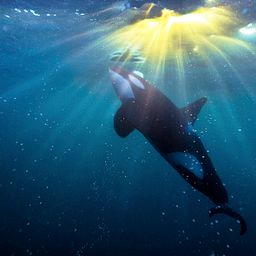Phthalate contamination in marine mammals off the Norwegian coast
Marine Pollution Bulletin ()
Open access (hybrid)
licensed under CC BY
1 Akvaplan-niva (current employee)
Authors (9)
- Clare Margaret Andvik
- Pierre Bories
- Mikael Harju
- Katrine Borgå
- Eve Marie Jourdain
- Richard Karoliussen
- Audun Håvard Rikardsen
- Heli Anna Irmeli Routti
- Pierre Blévin
Abstract
Phthalates are used in plastics, found throughout the marine environment and have the potential to cause adverse health effects. In the present study, we quantified blubber concentrations of 11 phthalates in 16 samples from stranded and/or free-living marine mammals from the Norwegian coast: the killer whale (Orcinus orca), sperm whale (Physeter macrocephalus), long-finned pilot whale (Globicephala melas), white-beaked dolphin (Lagenorhynchus albirostris), harbour porpoise (Phocoena phocoena), and harbour seal (Phoca vitulina). Five compounds were detected across all samples: benzyl butyl phthalate (BBP; in 50 % of samples), bis(2-ethylhexyl) phthalate (DEHP; 33 %), diisononyl phthalate (DiNP; 33 %), diisobutyl phthalate (DiBP; 19 %), and dioctyl phthalate (DOP; 13 %). Overall, the most contaminated individual was the white-beaked dolphin, whilst the lowest concentrations were measured in the killer whale, sperm whale and long-finned pilot whale. We found no phthalates in the neonate killer whale. The present study is important for future monitoring and management of these toxic compounds.
